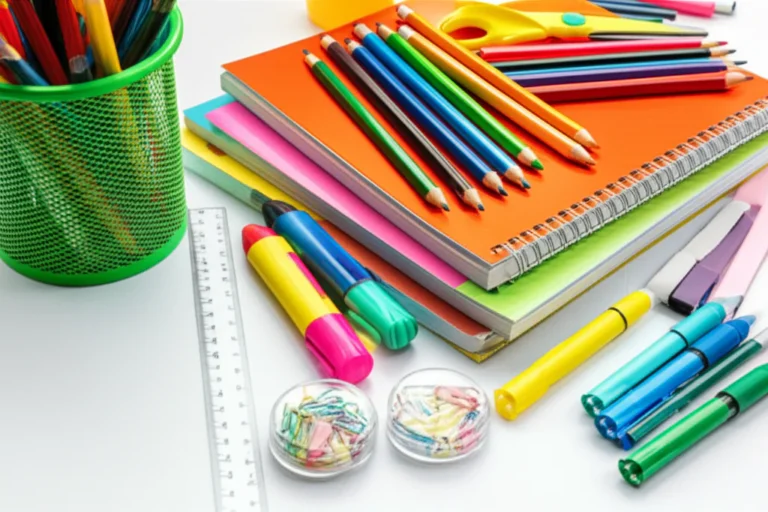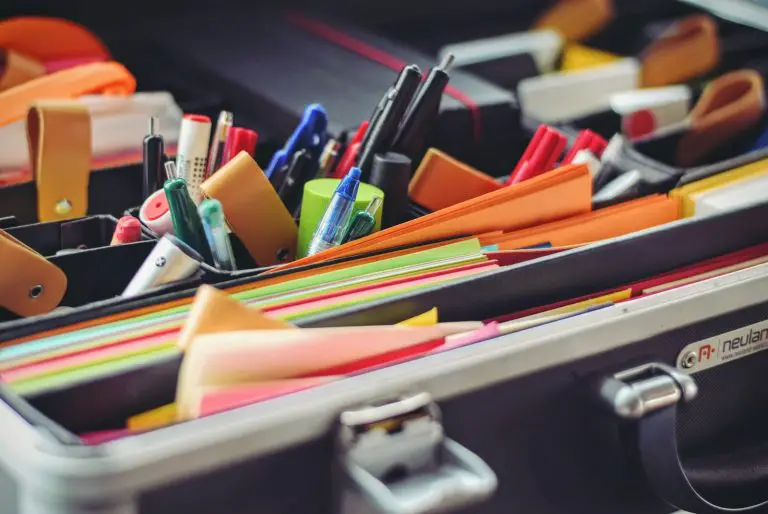Support our educational content for free when you purchase through links on our site. Learn more
9 Creative Ways Teachers Can Engage Students with Limited Resources (2025) 🎒
Imagine walking into a classroom where the walls don’t boast the latest tech gadgets or flashy supplies, yet the air buzzes with excitement, curiosity, and creativity. That’s the magic of a stimulating and engaging learning environment crafted with limited resources—but unlimited imagination. At Teacher Supply Store™, we’ve seen countless educators transform humble materials like bottle caps, recycled cardboard, and free digital tools into powerful learning experiences that captivate and inspire.
Did you know that according to NAEYC, play and student choice are among the most effective drivers of engagement and development—and they don’t require expensive supplies? This article dives into 9 proven strategies that help you maximize what you have, from innovative classroom setups and DIY crafts to smart tech use and community partnerships. Ready to unlock your classroom’s full potential without breaking the bank? Let’s get started!
Key Takeaways
- Maximize classroom space and materials by creating flexible zones and repurposing everyday items.
- DIY learning tools like bottle caps and cardboard boxes can be just as effective as store-bought manipulatives.
- Leverage free or low-cost technology such as Google Classroom and Kahoot! to enrich lessons without heavy investment.
- Build a collaborative community with parents, peers, and local businesses to expand resources and support.
- Engage students through choice, creativity, and hands-on projects that foster ownership and deep learning.
- Explore grants and fundraising opportunities to supplement your classroom budget.
Ready to stock up on trusted supplies that stretch your budget? Check out our Classroom Supplies and Instructional Technology collections at Teacher Supply Store™ to find quality tools that empower your teaching journey!
Table of Contents
- Quick Tips and Facts: Spark Engagement with What You’ve Got! ⚡️
- The Art and Science of Creating Stimulating Classrooms on a Shoestring Budget 🎨💡
- 1. Innovative Classroom Setup Ideas to Maximize Limited Resources 🪑📚
- 2. DIY Learning Materials and Creative Crafting Hacks ✂️🎲
- 3. Leveraging Technology Smartly Without Breaking the Bank 💻📱
- 4. Building a Collaborative Learning Community with Peer Resources 🤝👩🏫
- 5. Engaging Lesson Plans That Don’t Require Fancy Supplies 📋✨
- 6. Classroom Management Techniques to Enhance Engagement and Focus 🎯🧠
- 7. Utilizing Outdoor and Community Spaces as Dynamic Learning Environments 🌳🏫
- 8. Encouraging Student Creativity and Ownership in Learning Projects 🎨📝
- 9. Fundraising and Grant Opportunities for Resource-Strapped Classrooms 💰🎉
- Teacher Stories: Real-Life Successes in Resourceful Teaching 🌟📖
- Quick Hacks: Everyday Items Turned Learning Tools 🔧📏
- Conclusion: Empowering Educators to Thrive with Less but Achieve More 🚀📈
- Recommended Links: Top Resources for Budget-Friendly Teaching 🖇️🌐
- FAQ: Your Burning Questions About Engaging Learning Environments Answered ❓💬
- Reference Links: Trusted Sources and Further Reading 📚🔗
Quick Tips and Facts: Spark Engagement with What You’ve Got! ⚡️
Welcome to the ultimate guide on creating a stimulating and engaging learning environment with limited resources! At Teacher Supply Store™, we’ve heard it all—from teachers transforming shoeboxes into learning stations to turning everyday items into magical teaching tools. Here are some quick, actionable tips to get your creative juices flowing right now:
- ✅ Rotate materials frequently to keep curiosity alive without buying new stuff.
- ✅ Use student choice to boost engagement—kids love owning their learning!
- ✅ Incorporate play-based learning—it’s free, fun, and scientifically proven to boost brain development.
- ✅ Tap into community resources like libraries, parks, and local businesses for field trips or guest speakers.
- ✅ Use technology wisely—free apps and websites can supplement your lessons without costing a dime.
- ✅ Create DIY manipulatives from household items like bottle caps, string, or cardboard.
- ✅ Foster peer learning—students teaching each other is a win-win!
- ✅ Emphasize process over product to encourage creativity and reduce pressure on materials.
Did you know? According to NAEYC, play and meaningful choice are key drivers of engagement and development—and they don’t require fancy gadgets or expensive supplies. Ready to dive deeper? Let’s unpack these strategies and more!
The Art and Science of Creating Stimulating Classrooms on a Shoestring Budget 🎨💡
Creating an engaging classroom with limited resources isn’t just about scrimping and saving—it’s an art and a science. It’s about maximizing what you have, knowing your learners, and designing experiences that spark curiosity and joy.
Why It Matters
Research from the National Association for the Education of Young Children (NAEYC) emphasizes that rich, meaningful experiences trump expensive materials. Children learn best when they feel safe, included, and challenged just enough to stretch their abilities.
The Science Behind Engagement
- Brain science shows that active exploration and social interaction build neural pathways.
- Choice and agency increase motivation and ownership of learning.
- Variety and novelty keep attention sharp and minds curious.
So, even with limited supplies, you can create a dynamic learning ecosystem that nurtures every child’s growth.
1. Innovative Classroom Setup Ideas to Maximize Limited Resources 🪑📚
Your classroom layout is your secret weapon! A well-thought-out setup can make even the simplest materials shine.
Key Principles for Setup
- Zones for different activities: reading nook, creative corner, quiet space, and collaborative tables.
- Flexible seating: Use cushions, crates, or even floor mats to create comfy spots without expensive furniture.
- Vertical space: Use walls for displays, hanging organizers, or DIY pocket charts.
- Clear labeling: Use colorful labels and signs to help students navigate independently.
Step-by-Step Setup on a Budget
- Assess your space: Measure and map your classroom to identify natural zones.
- Declutter: Remove unnecessary items to create breathing room.
- Repurpose: Turn old crates into storage, use shower curtain rings for hanging materials, or convert a rolling cart into a mobile supply station.
- Student involvement: Let students help rearrange or decorate zones—they’ll feel more connected.
Real Teacher Tip
Ms. Lopez from Texas shared: “I turned an old bookshelf into a ‘maker station’ with recycled materials. My students love creating, and it cost me nothing but time!”
2. DIY Learning Materials and Creative Crafting Hacks ✂️🎲
When budgets are tight, your hands and imagination become your best tools. DIY materials can be just as effective—and often more meaningful—than store-bought ones.
Popular DIY Materials
| Item | Use Case | Benefits | Drawbacks |
|---|---|---|---|
| Bottle caps | Counting, sorting, math games | Free, colorful, tactile | Small pieces, choking hazard |
| Cardboard boxes | Building blocks, puzzles | Recyclable, versatile | Durability varies |
| Clothespins | Fine motor skills, clip games | Easy to handle, inexpensive | Can break under stress |
| Old magazines | Collages, vocabulary cards | Visual variety, free | Requires cutting time |
| Yarn/string | Weaving, lacing activities | Develops hand-eye coordination | Can tangle easily |
Step-by-Step: Making a DIY Math Game with Bottle Caps
- Gather 50 bottle caps (clean and dry).
- Write numbers 1-10 on 5 caps each with a permanent marker.
- Create simple math problem cards (addition, subtraction).
- Students draw a card and use caps to solve the problem physically.
- Rotate roles—some students create problems, others solve.
This hands-on approach boosts engagement and reinforces concepts without fancy tools.
Recommended Brands for Craft Supplies
- Crayola offers affordable markers and glue sticks that last.
- Elmer’s Glue is a classroom staple for crafting durability.
- Fiskars scissors are teacher-tested for safety and precision.
👉 Shop Classroom Supplies at Teacher Supply Store™ for trusted brands and bulk options.
3. Leveraging Technology Smartly Without Breaking the Bank 💻📱
Technology doesn’t have to be a luxury! With a little creativity, you can harness free or low-cost digital tools to enrich your lessons.
Top Free or Low-Cost Tools
| Tool | Purpose | Features | Accessibility |
|---|---|---|---|
| Google Classroom | Assignment management | Cloud-based, integrates with apps | Free with Google account |
| Kahoot! | Interactive quizzes | Gamified, real-time feedback | Free basic version |
| Quizlet | Flashcards and games | Customizable, audio support | Free with ads |
| Scratch | Coding and creativity | Drag-and-drop programming | Free, kid-friendly |
| Epic! | Digital library for kids | Thousands of books, read-aloud | Free trial, then subscription |
How to Use Tech Without Devices for Every Student
- Project content on a screen for group activities.
- Use student pairs or small groups to share devices.
- Assign offline activities that complement digital lessons.
AI Tools to Boost Engagement
AI-powered tools like ChatGPT can help you generate lesson ideas, quizzes, or even personalized writing prompts. Just remember to use AI as a support tool, not a replacement for your creativity and empathy. Learn more about instructional technology at Teacher Supply Store™.
4. Building a Collaborative Learning Community with Peer Resources 🤝👩🏫
You’re not alone! Building a network of fellow educators and community members can multiply your resources exponentially.
Ways to Collaborate
- Resource sharing: Swap materials or lesson plans with nearby teachers.
- Parent volunteers: Tap into talents like storytelling, art, or gardening.
- Student peer tutoring: Older or more advanced students can support others.
- Community partnerships: Local businesses might donate supplies or sponsor events.
Benefits of Collaboration
- Increases diversity of materials and ideas.
- Builds a support system to reduce burnout.
- Fosters a sense of belonging for students and teachers alike.
5. Engaging Lesson Plans That Don’t Require Fancy Supplies 📋✨
The heart of engagement is meaningful content. You don’t need expensive kits to craft lessons that captivate.
Lesson Plan Ideas
- Inquiry-based learning: Pose open-ended questions and let students explore answers through discussion and simple experiments.
- Storytelling and role-play: Use imagination and props from around the classroom.
- Outdoor learning: Nature walks, scavenger hunts, and observation journals.
- Project-based learning: Long-term projects using recycled materials or digital tools.
Example: Science Lesson Without Fancy Gear
Topic: Plant Growth
- Use seeds from the kitchen (beans, peas).
- Plant in recycled containers (yogurt cups).
- Students observe and record growth daily.
- Discuss variables like sunlight and water.
This approach teaches scientific method and responsibility with zero cost.
6. Classroom Management Techniques to Enhance Engagement and Focus 🎯🧠
Even the best materials won’t help if students aren’t focused. Effective management is key to a thriving learning environment.
Strategies That Work
- Clear routines: Predictability reduces anxiety and distractions.
- Positive reinforcement: Specific praise (e.g., “I love how you stayed on task!”) motivates better than generic “Good job.”
- Visual schedules: Help students know what’s next.
- Movement breaks: Short physical activities reset attention spans.
- Student roles: Assign helpers to foster responsibility and engagement.
Anecdote
Mr. Chen shares: “When I started using a visual timer and giving students ‘focus points’ for on-task behavior, disruptions dropped by half. Plus, kids loved earning their points!”
7. Utilizing Outdoor and Community Spaces as Dynamic Learning Environments 🌳🏫
Why limit learning to four walls? The world outside your classroom is a treasure trove of resources.
Benefits of Outdoor Learning
- Boosts physical health and mood.
- Provides real-world context for lessons.
- Encourages exploration and creativity.
Ideas for Outdoor Learning
- Nature journals and sketching.
- Math scavenger hunts (counting leaves, measuring sticks).
- Science observations (weather, insects).
- Community walks to local landmarks or businesses.
Partnering with Community
Local libraries, museums, and parks often offer free or low-cost programs for schools. Reach out and build relationships!
8. Encouraging Student Creativity and Ownership in Learning Projects 🎨📝
When students feel ownership, engagement skyrockets. Creativity flourishes even without expensive supplies.
How to Foster Ownership
- Let students choose topics or project formats.
- Encourage reflection and self-assessment.
- Provide open-ended tasks that allow multiple solutions.
- Celebrate effort and process, not just final products.
Example Project
Create a “My Community” booklet using drawings, photos, and writing. Students decide what to include and how to present it, using recycled paper and markers.
9. Fundraising and Grant Opportunities for Resource-Strapped Classrooms 💰🎉
Sometimes, a little extra cash can unlock big possibilities. Here’s how to find and secure funding.
Popular Grant Sources
| Grant Name | Focus Area | Application Tips | Website |
|---|---|---|---|
| DonorsChoose | Classroom projects | Clear goals, student impact stories | donorschoose.org |
| Lowe’s Toolbox for Education | School improvement projects | Early application recommended | lowes.com/toolbox |
| NEA Foundation Grants | Innovative teaching | Collaborate with colleagues | neafoundation.org |
| Target Field Trip Grants | Field trips and experiences | Emphasize community benefits | corporate.target.com |
Fundraising Ideas
- Host a book or bake sale.
- Organize a community fun run or walkathon.
- Use online crowdfunding platforms like GoFundMe.
- Partner with local businesses for sponsorships or donations.
Teacher Stories: Real-Life Successes in Resourceful Teaching 🌟📖
Nothing inspires like real stories from the trenches! Here are a few gems from teachers who turned scarcity into creativity:
- Ms. Patel in New York created a “story stones” set from painted rocks to encourage narrative skills. Her students now tell richer, more imaginative stories.
- Mr. Gomez in California uses recycled bottle caps and cardboard to teach math concepts, reporting improved engagement and understanding.
- Mrs. O’Connor in Ohio started a “community helpers” project where parents and local workers visit the classroom, connecting learning to real life.
These stories show that passion and ingenuity trump budget every time.
Quick Hacks: Everyday Items Turned Learning Tools 🔧📏
Before you toss that empty cereal box or those old socks, think: could these be your next teaching tool?
| Item | Learning Use | Why It Works |
|---|---|---|
| Empty cereal boxes | Sorting, stacking, building | Lightweight, easy to decorate |
| Socks | Puppet shows, storytelling | Soft, tactile, encourages creativity |
| Egg cartons | Counting, color sorting | Compartments perfect for sorting |
| Paper towel rolls | Telescopes, sound tubes | Lightweight, easy to cut |
| Old magazines | Collages, vocabulary cards | Visual variety, free |
Try these hacks and watch your students’ eyes light up with delight!
Conclusion: Empowering Educators to Thrive with Less but Achieve More 🚀📈
So, here’s the big reveal: you don’t need a treasure trove of supplies to create a vibrant, engaging classroom. With a pinch of creativity, a dash of collaboration, and a sprinkle of strategic planning, you can transform limited resources into a powerhouse of learning experiences. From repurposing everyday items like bottle caps and cereal boxes to leveraging free tech tools and community partnerships, the possibilities are endless.
Remember Ms. Lopez’s “maker station” or Mr. Chen’s visual timer success? These stories prove that engagement and stimulation come from thoughtful design and meaningful interactions, not just shiny new gadgets. By focusing on play, choice, and student ownership, you foster a joyful learning environment that meets diverse needs and sparks curiosity.
And if you ever feel stuck, don’t forget the power of grants, fundraising, and tapping into your professional network. The journey of resourceful teaching is one of continuous learning and innovation—and you’re already on the right path.
Ready to turn your classroom into a creative haven? Let’s gear up with some of the best tools and supplies that won’t break the bank but will definitely boost your teaching mojo!
Recommended Links: Top Resources for Budget-Friendly Teaching 🖇️🌐
Here’s your curated shopping list and reading corner to kickstart your resourceful teaching adventure:
-
Crayola Markers & Craft Supplies:
Amazon Search for Crayola Classroom Supplies | Crayola Official Website -
Elmer’s Glue & Adhesives:
Amazon Search for Elmer’s Glue | Elmer’s Official Website -
Fiskars Scissors (Teacher-Approved):
Amazon Search for Fiskars Scissors | Fiskars Official Website -
Google Classroom & Kahoot! (Free Digital Tools):
Google Classroom | Kahoot! -
DonorsChoose (Grant Opportunities):
DonorsChoose.org -
Books to Inspire Resourceful Teaching:
- The Innovator’s Mindset by George Couros: Amazon Link
- Teach Like a Pirate by Dave Burgess: Amazon Link
- The Creative Classroom by Keith Sawyer: Amazon Link
FAQ: Your Burning Questions About Engaging Learning Environments Answered ❓💬
What are the most essential supplies for a primary school classroom to promote interactive learning?
Essentials include:
- Basic art supplies (markers, crayons, glue) for creativity.
- Manipulatives like counting bears or bottle caps for hands-on math.
- Books and reading materials to foster literacy and imagination.
- Organizational tools such as bins and labels to keep materials accessible.
- Technology access (even limited) for interactive lessons.
These supplies support multi-sensory learning and encourage student participation. Prioritize items that can be used across subjects and adapted for different activities.
How can I repurpose old or recycled materials to create engaging learning tools on a tight budget?
Repurposing is a win-win—it saves money and teaches sustainability. Use:
- Cardboard boxes for building and puzzles.
- Bottle caps for counting and sorting games.
- Old socks as puppets for storytelling.
- Egg cartons for color sorting or seed starters.
Encourage students to bring in safe recyclables and involve them in crafting activities. This builds ownership and creativity.
What are some cost-effective ways to organize and manage classroom resources to maximize learning outcomes?
- Use clear bins and labels to make materials easy to find and return.
- Create student job charts to involve learners in upkeep.
- Rotate materials regularly to maintain novelty.
- Use vertical space with hanging organizers or pocket charts.
- Implement digital inventories to track supplies and avoid overbuying.
Good organization reduces downtime and fosters independence.
What role do educational games and activities play in creating a stimulating learning environment with limited resources?
Games and activities are the heartbeat of engagement. They:
- Promote active learning and social skills.
- Provide immediate feedback and motivation.
- Allow for differentiated instruction through adaptable rules and roles.
- Can be created cheaply or DIY, such as card games, scavenger hunts, or role-plays.
They transform abstract concepts into tangible experiences.
How can teachers effectively utilize digital learning materials and online resources to supplement limited physical supplies?
- Use free platforms like Google Classroom, Kahoot!, and Quizlet to create interactive lessons.
- Incorporate virtual field trips and videos to expand horizons.
- Assign collaborative projects using shared documents or slides.
- Use AI tools (e.g., ChatGPT) to generate customized lesson plans or writing prompts.
Ensure equitable access by pairing students or offering offline alternatives.
What strategies can teachers use to encourage student participation and engagement in lessons with minimal equipment or technology?
- Use student choice to increase ownership.
- Incorporate movement and kinesthetic activities to maintain energy.
- Employ peer teaching and group work to build community.
- Use storytelling, role-play, and drama to bring lessons alive.
- Provide specific, positive feedback to reinforce effort and focus.
Engagement is about connection, not gadgets.
How can I evaluate and prioritize the most important learning materials and supplies needed for my specific classroom and curriculum?
- Align materials with curriculum goals and standards.
- Assess student interests, needs, and learning styles.
- Prioritize multi-use, durable, and versatile items.
- Consider space constraints and storage.
- Seek input from colleagues and students for relevance.
Regularly review and adjust your inventory to stay responsive.
Reference Links: Trusted Sources and Further Reading 📚🔗
- NAEYC Principles of Child Development and Learning and Implications That Inform Practice
- National Association for the Education of Young Children (NAEYC) – Enhancing Development
- ASCD Article on Using AI to Fuel Engagement and Active Learning
- DonorsChoose – Classroom Project Funding
- Crayola Official Website
- Elmer’s Official Website
- Fiskars Official Website
- Google Classroom
- Kahoot!
By weaving together these trusted resources with your own creativity and dedication, you’re set to craft a learning environment that’s not only stimulating but truly transformative—no matter the budget! 🎉



